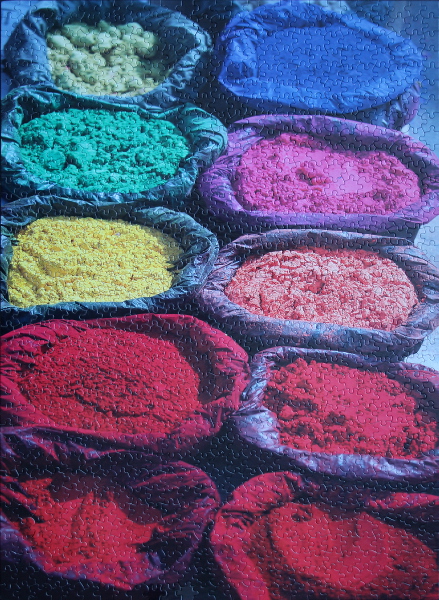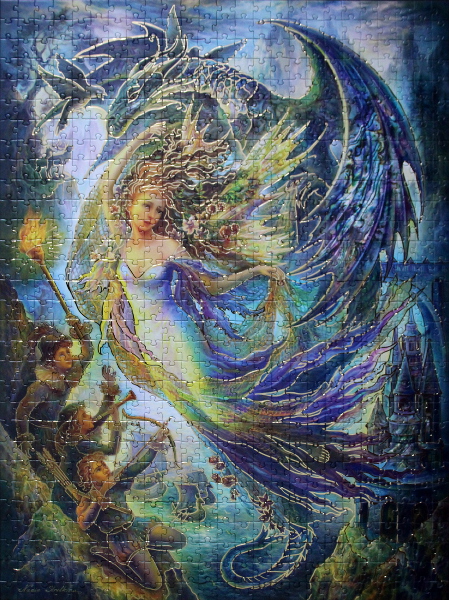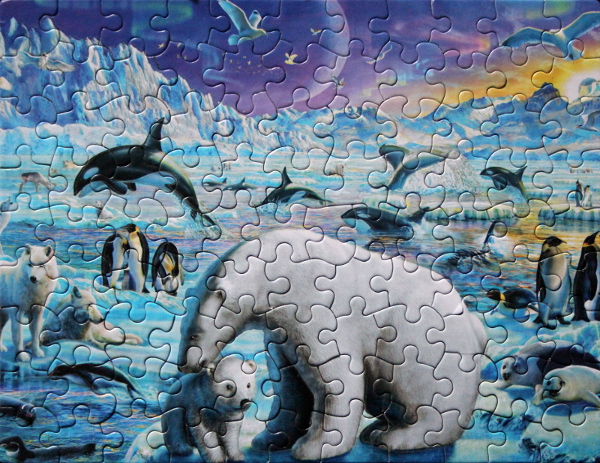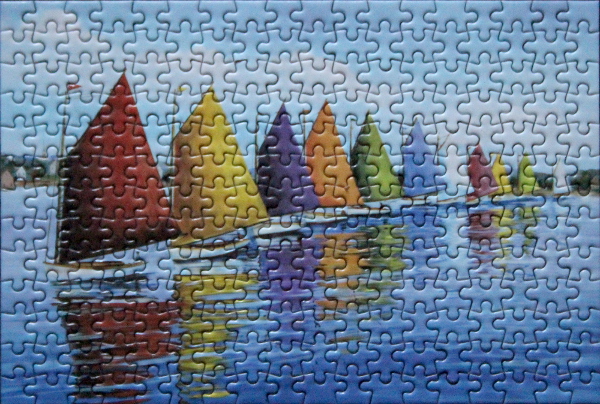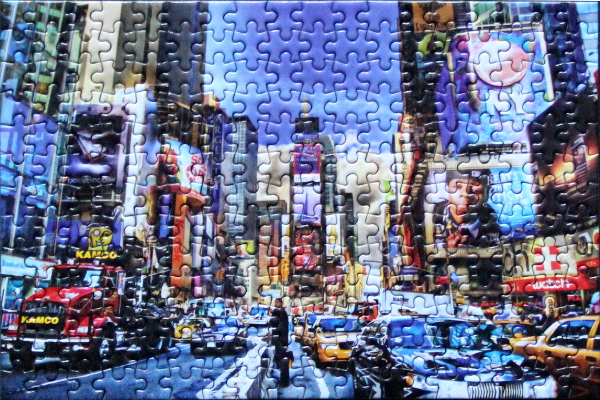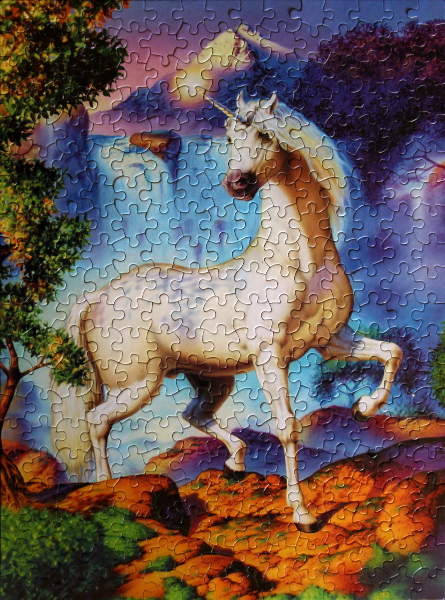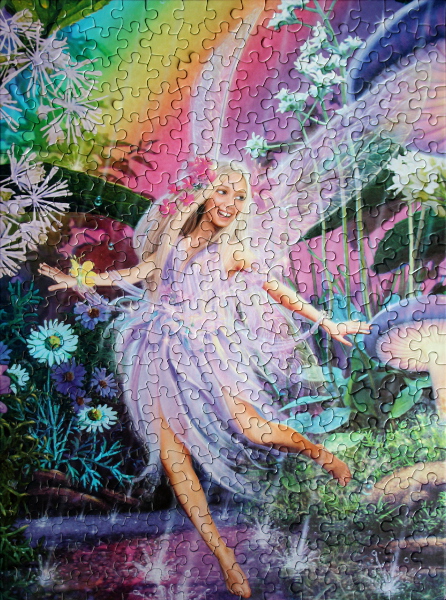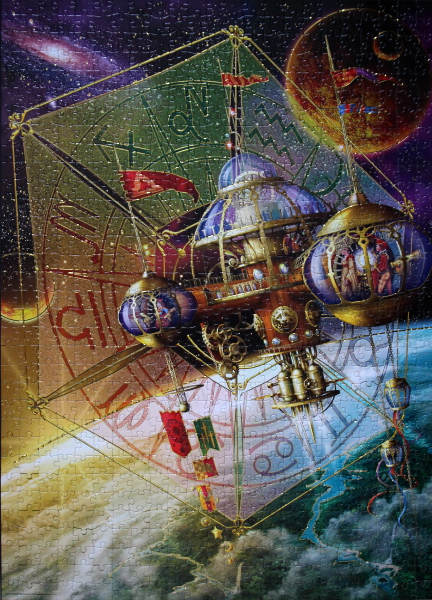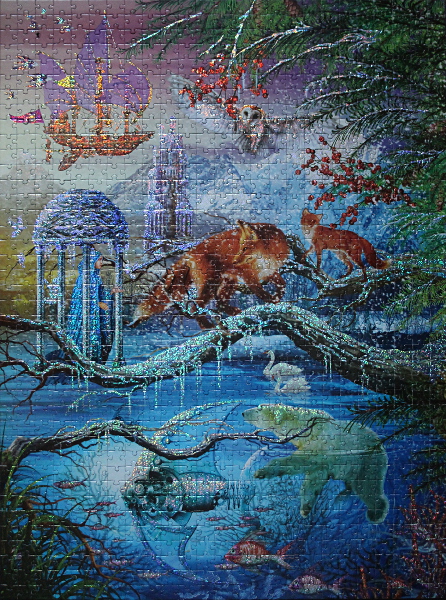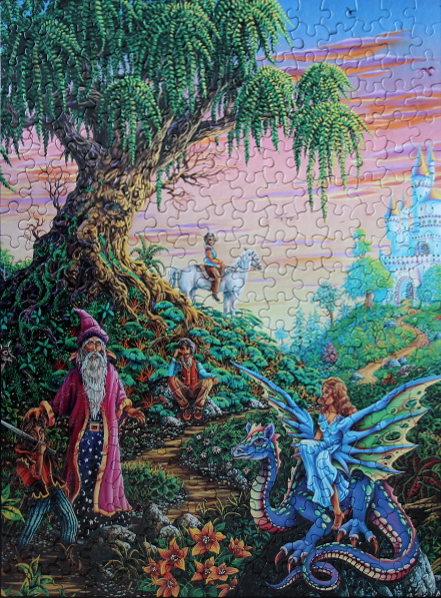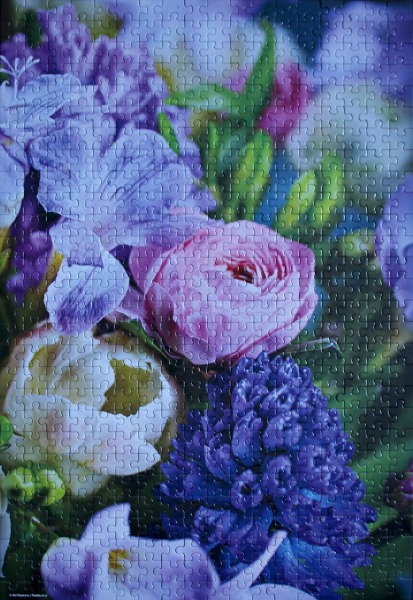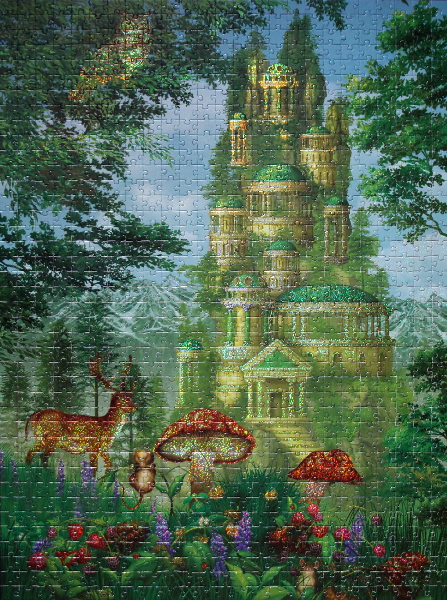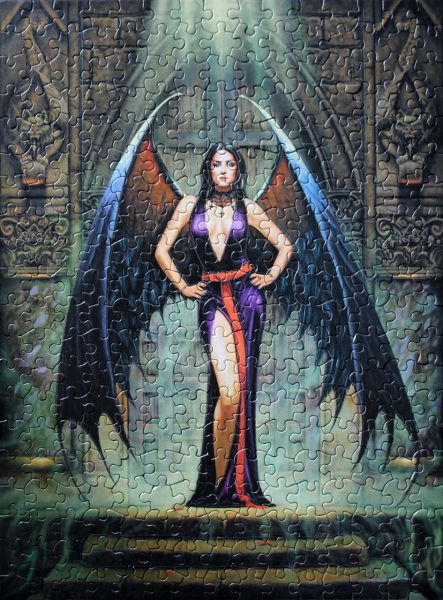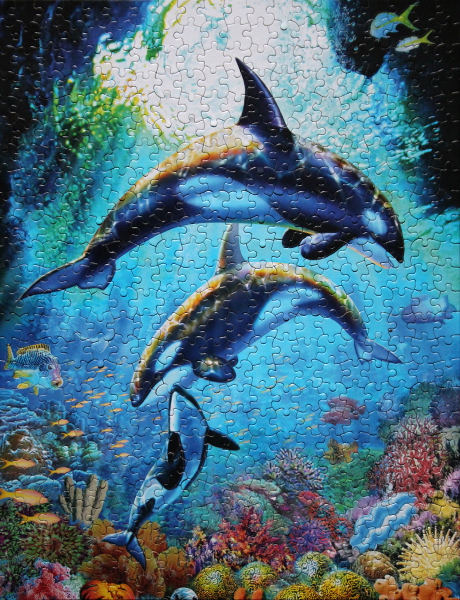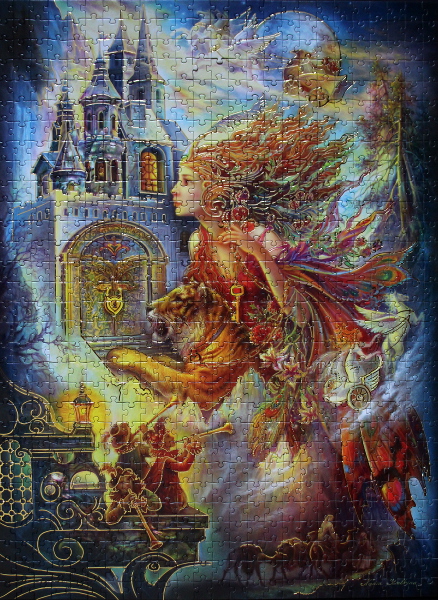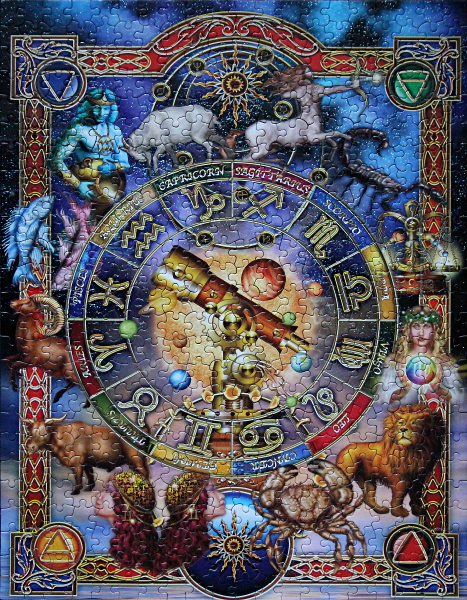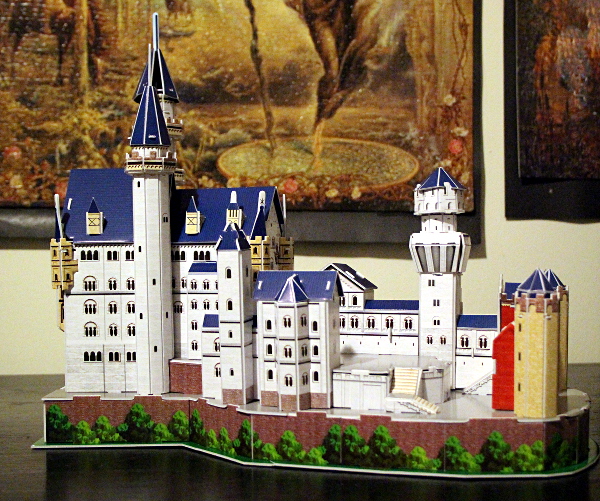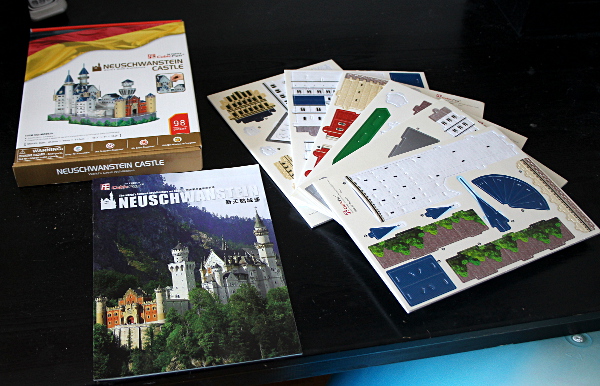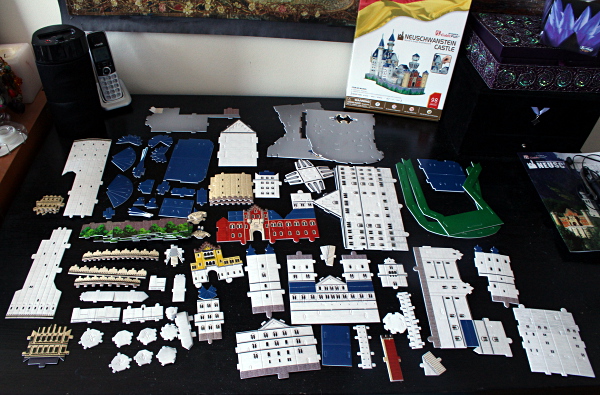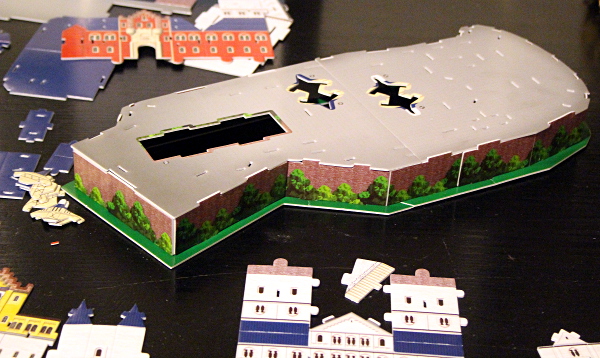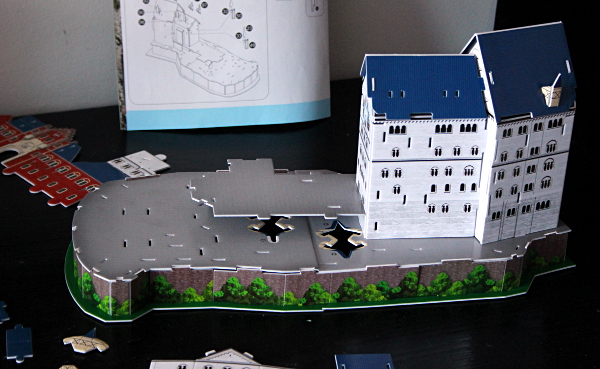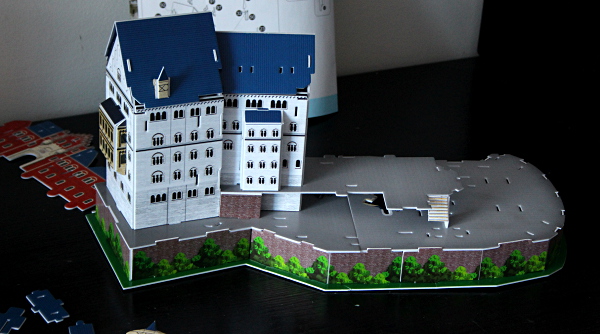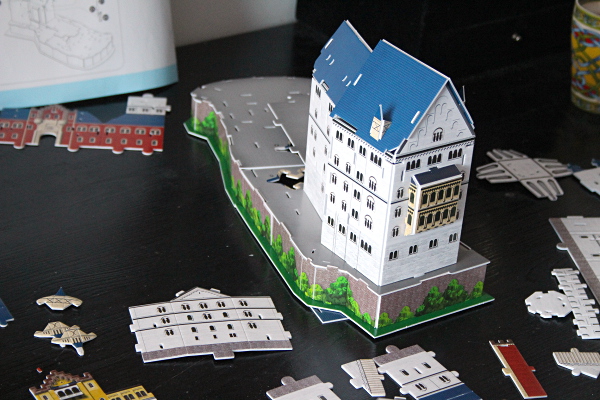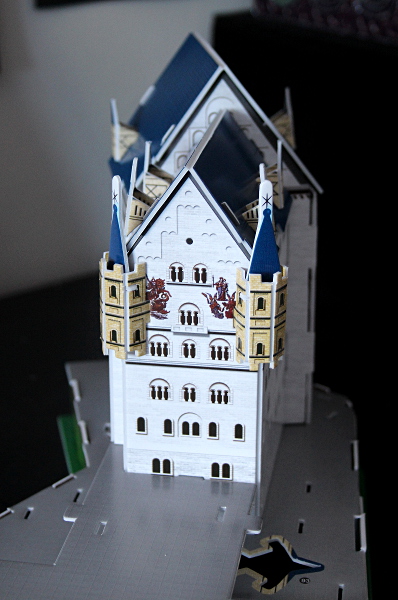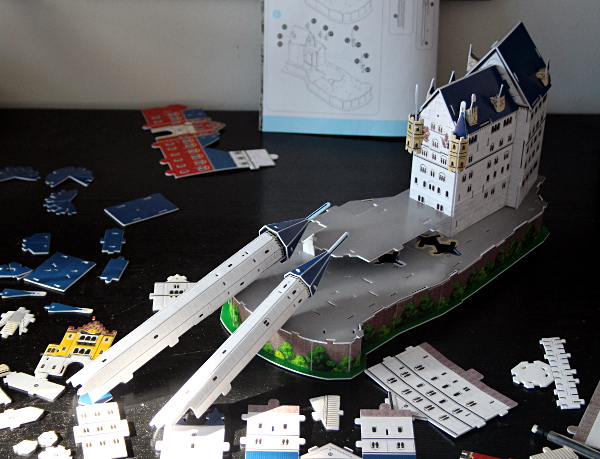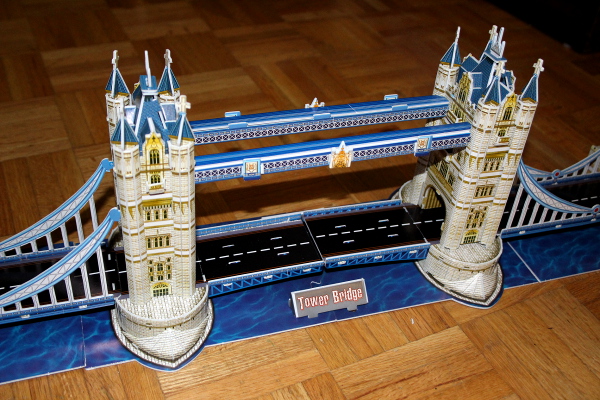
Size: 120 pieces
Dimensions: 76 cm x 12 cm x 23 cm
Producer: CubicFun, 3D Puzzle series MC, #MC066h, complexity 5/6
Original packaging: http://www.cubicfun.com/index.php?m=Products&a=show&id=43&bid=1
Puzzle: Following the St. Basil’s Cathedral, Taj Mahal, Parliament Buildings of Canada, and Neuschwanstein Castle 3D puzzles, I have my people periodically checking our nearby Mrs. Tiggy Winkles toy store for higher-complexity puzzles made by CubicFun. And this time, we have found the Tower Bridge of London.
Here is the box, the booklet (see below for the historical information contained therein) and sheets with puzzle pieces.
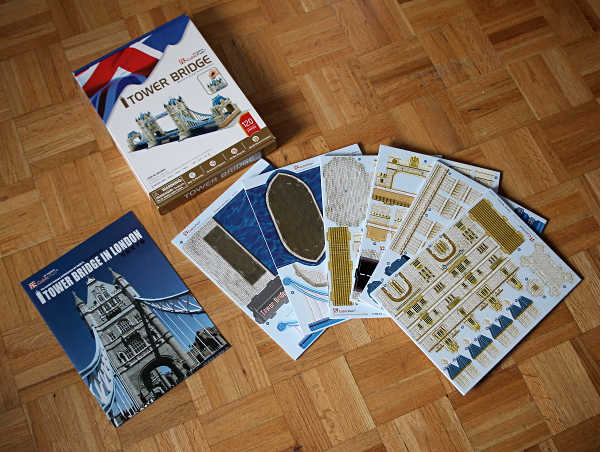
I have done this in three stages:
1. Separating all the pieces from the sheets in which they were embedded.
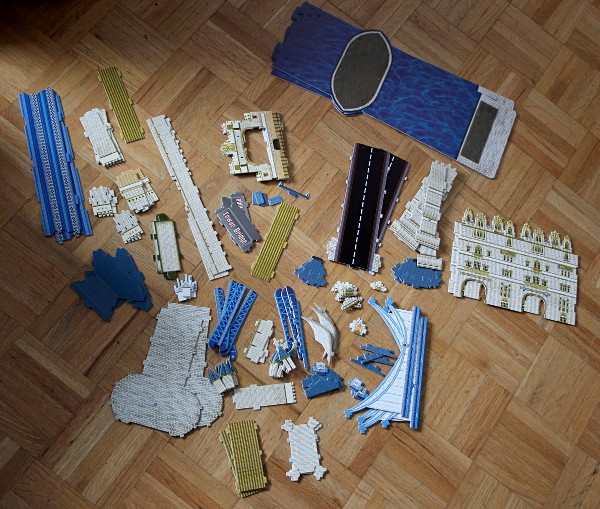
2. Punching out the holes in the pieces (I used a tip of a mechanical pencil). My 3.5-year old was very excited about helping, and so he did most of the hole-punching while I fitted the pieces together.
3. And putting together the puzzle itself. Below are the progress photos (this time I had enough willpower to stop briefly to snap a few photos):
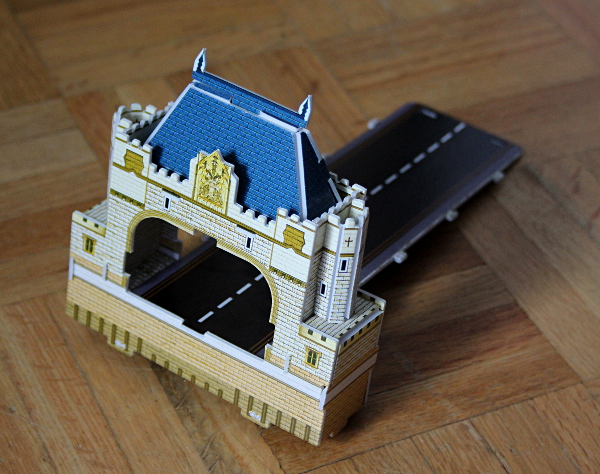
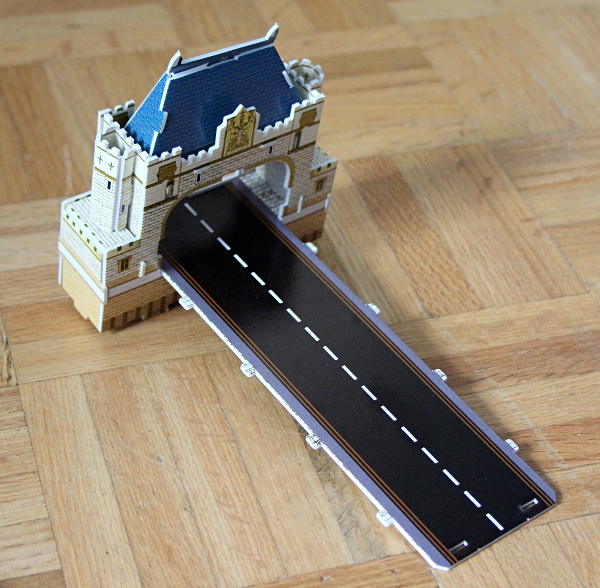
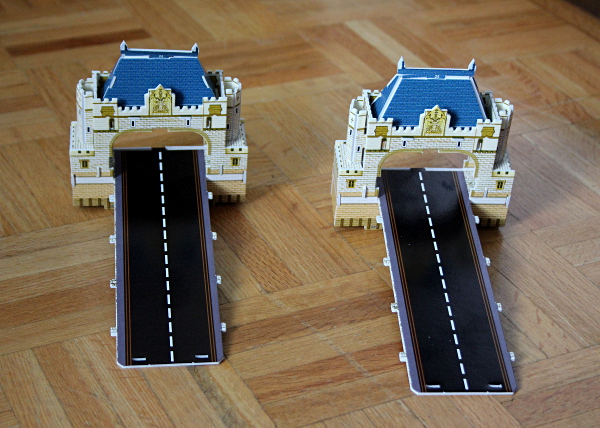
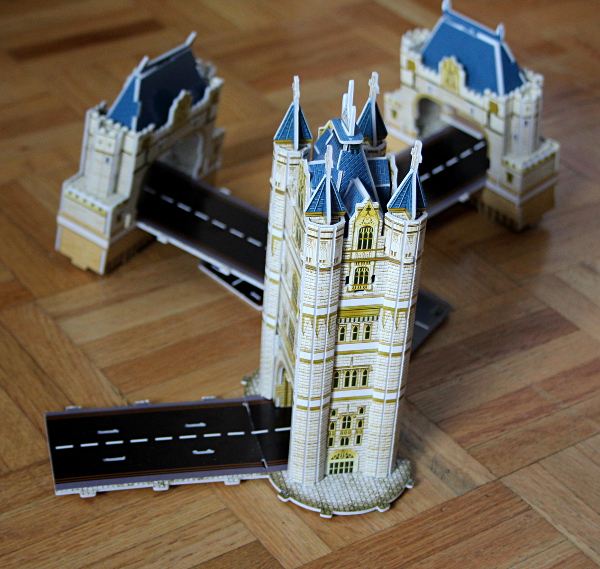
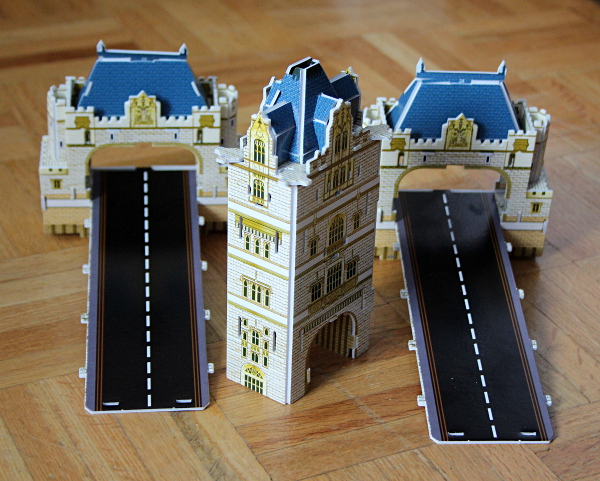
I recommend to be very attentive to the assembly of the two large towers and follow the letters on the base and the roof, to ensure that the corner towers are connected to the correct letters. Below is the photo of what NOT to do: notice the two holes around the balcony – those holes need to be facing the other way, toward the middle of the bridge, yet the towers attached to those corners need to face away from the middle of the bridge.

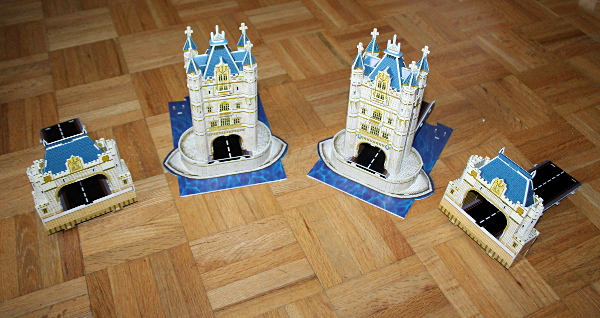
I had to re-do the two middle towers pictured above to face the holes the correct way in order to connect the two halves of the bridge.

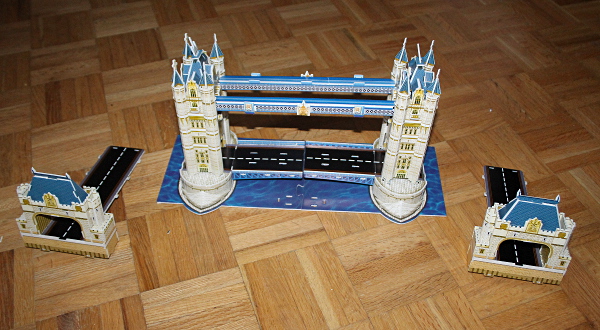
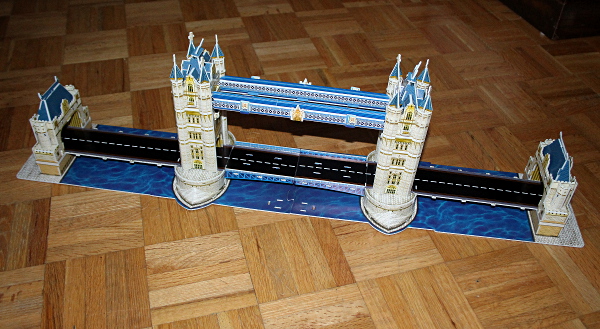
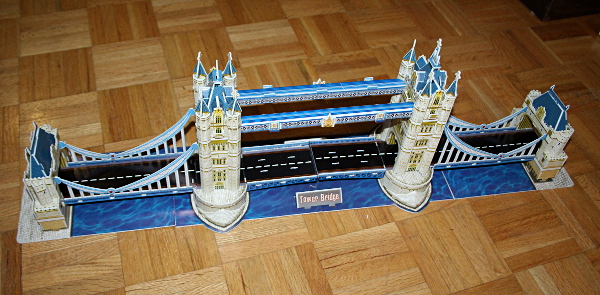
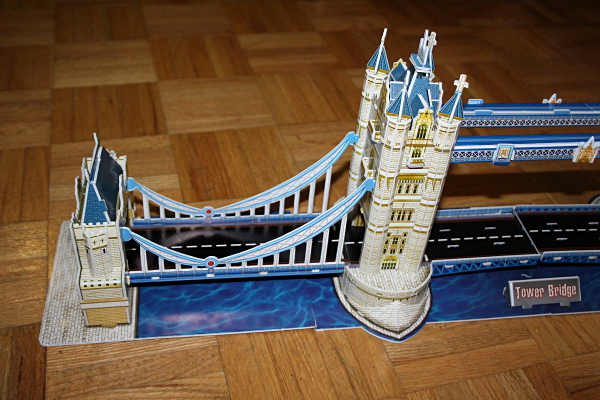
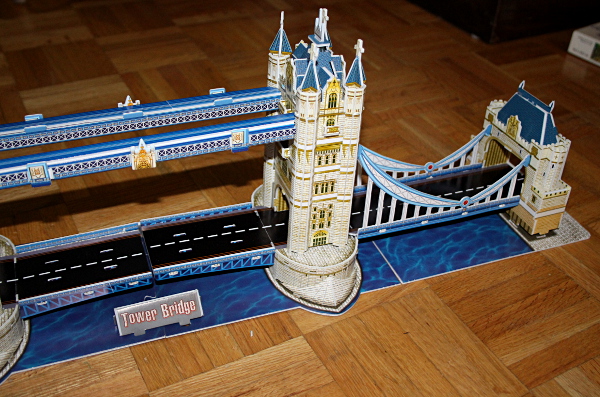

Lots of fun putting the puzzle together, even though the final product is a bit flimsy. It is, I suppose unavoidable, considering the flexible nature of the bridge.
Notes from the puzzle booklet: “The world’s famous architecture we build it.
Tower Bridge is a combined bascule and suspension bridge in London, England over the River Thames. It is close to the Tower of London, which gives it its name. It has become an iconic symbol of London. Tower Bridge is one of several London bridges owned and maintained by the City Bridge Trust, a charitable trust overseen by the City of London Corporation.
Tower Bridge is sometimes mistakenly referred to as London Bridge, which is actually the next bridge up-stream. A popular urban legend is that, in 1968 Robert McCulloch, the purchaser of the old London Bridge which was later shipped to Lake Havasu City, Arizona, believed mistakenly that he was buying Tower Bridge, but this was denied by McCulloch himself and has been debunked by Ivan Luckin, the seller of the bridge. Its present colour dates from 1977 when it was painted red, white and blue for the Queen’s Silver Jubilee. Previous to this, it was painted a chocolate brown colour.
1910 The high-level walkways, which were designed so that the public could still cross the bridge when it was raised, were closed down due to lack of use. Most people preferred to wait at the bottom and watch the bascules rise up!
1912 During an emergency, Frank McClean had to fly between the bascules and the high-level walkways in his Short biplane, to avoid an accident.
1952 A London bus had to leap from one bascule to the other when the bridge began to rise with the bus still on it.
1977 Tower Bridge was painted red, white and blue to celebrate the Queen’s Silver Jubilee.
The walkways boast stunning views of the River Thames and many famous London sites, serving as viewing galleries for over 380,000 tourists who visit each year.
The bascules are raised around 1000 times a year. The bascules, weighing over 1,000 tones each, were counterbalanced to minimize the force required and allow raising in five minutes.
Tower Bridge is still a busy and vital crossing of the Thames: it is crossed by over 40,000 people (motorists and pedestrians) every day.
The tour value of Tower Bridge— There are the museum, exhibition hall, stores and saloons inside the Tower Bridge. HMS Belfast sails under Tower Bridge to take up her permanent mooring in the Pool of London.
In the New Year’s Eve, there is the catharine all over the the sky of the River Thames. Old-timey Architecture, the fragrance of the beer from the saloon, the jow fom the church, and the vintage taxi surround the Tower Bridge, makes people go backward to the London in The Nineteenth Century.” [sic, booklet included with the puzzle]






